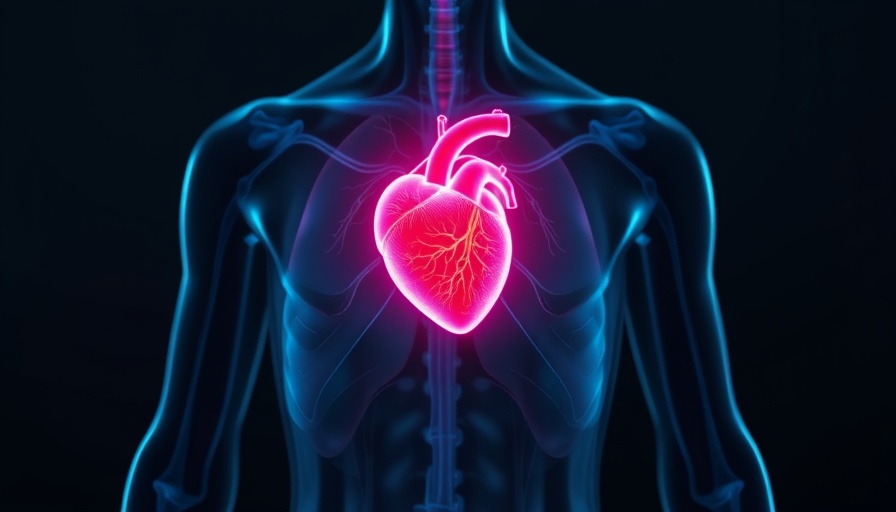
Understanding Ultra-Processed Foods: What Are They?
Ultra-processed foods (UPFs) have infiltrated our diets at an alarming rate, dominating approximately 60% of daily calorie intake in the U.S. These products are typically highly refined and packed with ingredients that are often unrecognizable as food—think sugary sodas, packaged snacks, instant noodles, and processed meats. The resulting concoction is designed to enhance shelf life and flavor but at the expense of essential nutrients. While convenient and often cheaper, these foods can lead to a multitude of health issues.
The Impact of UPFs on Inflammation and Heart Health
Recent research conducted by Florida Atlantic University has unveiled a troubling relationship between UPF consumption and inflammation—in particular, elevated levels of high-sensitivity C-reactive protein (hs-CRP). This protein is a well-known biomarker for inflammation, serving as a predictor of cardiovascular disease (CVD). The study indicates that individuals consuming up to 79% of their calories from UPFs have an 11% increased likelihood of elevated hs-CRP levels. This risk escalates for older adults, smokers, and those struggling with obesity, amplifying the potential for serious heart-related issues.
Ultra-Processed Foods and Cancer Links
Not only are UPFs linked to inflammatory responses but they may also contribute to the rising rates of cancer, particularly colorectal cancer. The authors of the study point out that such foods could exacerbate existing medical conditions and lead to gastrointestinal diseases. For younger individuals, the correlation is especially alarming, as their consumption patterns shift towards more UPFs, potentially putting them at greater risk.
A Call for Public Awareness: Learning from the Tobacco Campaign
Drawing parallels to the historical rise of tobacco-related health awareness, researchers believe it will take time for society to fully grasp the harmful effects of UPFs. Just as decades of advocacy transformed tobacco use perceptions and policies, similar efforts are essential for promoting awareness about UPF consumption. Health professionals and policymakers must push for changes, including stricter regulations on food labeling and the reduction of harmful additives.
Strategies for Healthier Choices: Shifting Your Diet Away from UPFs
For those looking to make healthier choices, it’s crucial to start steering clear of ultra-processed foods. Here are some practical tips:
- Choose Whole Foods: Focus on whole, natural foods like fruits, vegetables, whole grains, and lean proteins.
- Meal Prep: Preparing meals at home can drastically reduce your dependency on convenience foods.
- Reading Labels: Familiarize yourself with ingredient lists. If you see names you don’t recognize, it's best to avoid the product.
- Plan Your Snacks: Instead of grabbing a packaged snack, opt for nuts, fruits, or yogurt to curb hunger safely.
Making Change Together: The Role of Community
As the research indicates, making healthy eating choices can be a complex journey influenced by socioeconomic factors. It's essential that community programs support access to fresh foods and promote nutritional education. Local initiatives can create environments where healthy food is accessible and affordable, empowering individuals to take charge of their diets.
The Bottom Line: Being Mindful of What You Eat
The implications of consuming ultra-processed foods extend beyond personal health; they pose a significant risk to public health as a whole. By remaining informed and taking proactive steps, such as seeking out whole foods and advocating for healthier community policies, you can contribute to positive change. In an age where food choices can often feel overwhelming, remember that small, intentional shifts can lead to lasting health benefits.
If you want to learn more about how you can reduce ultra-processed foods in your diet and promote healthier eating habits, consider consulting with a health professional. Integrating these changes can lead to a more vibrant and healthful life.
 Add Row
Add Row  Add
Add 




Write A Comment